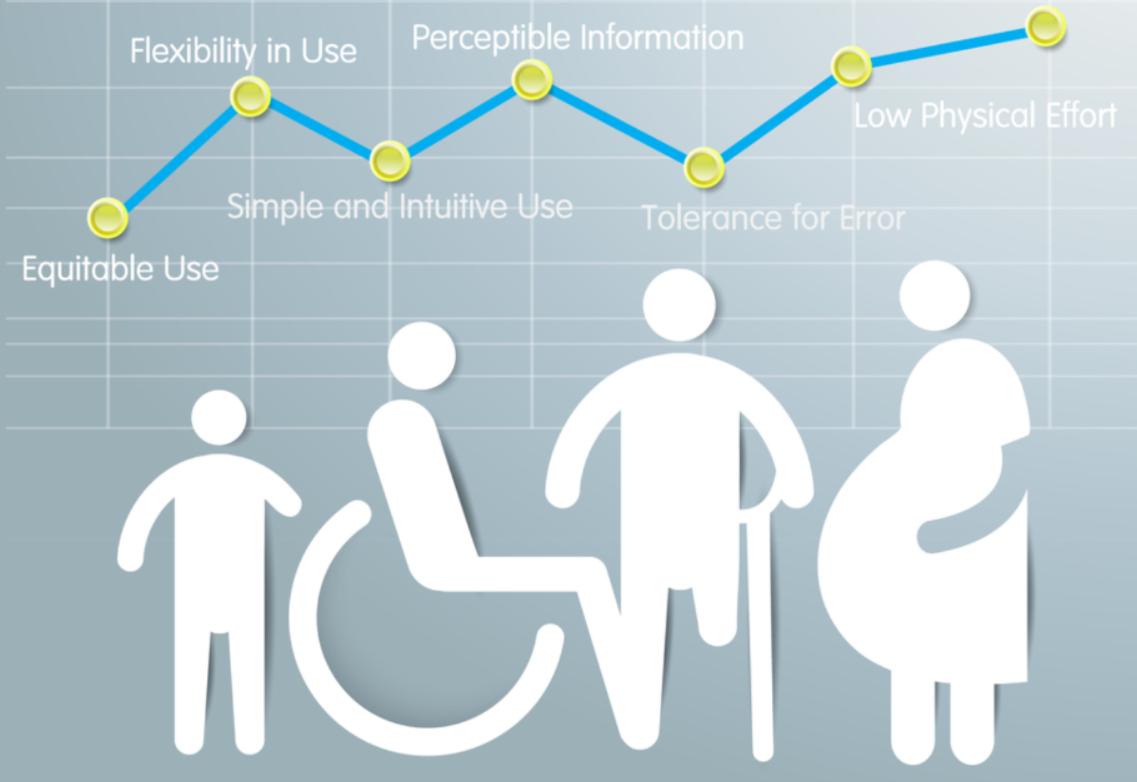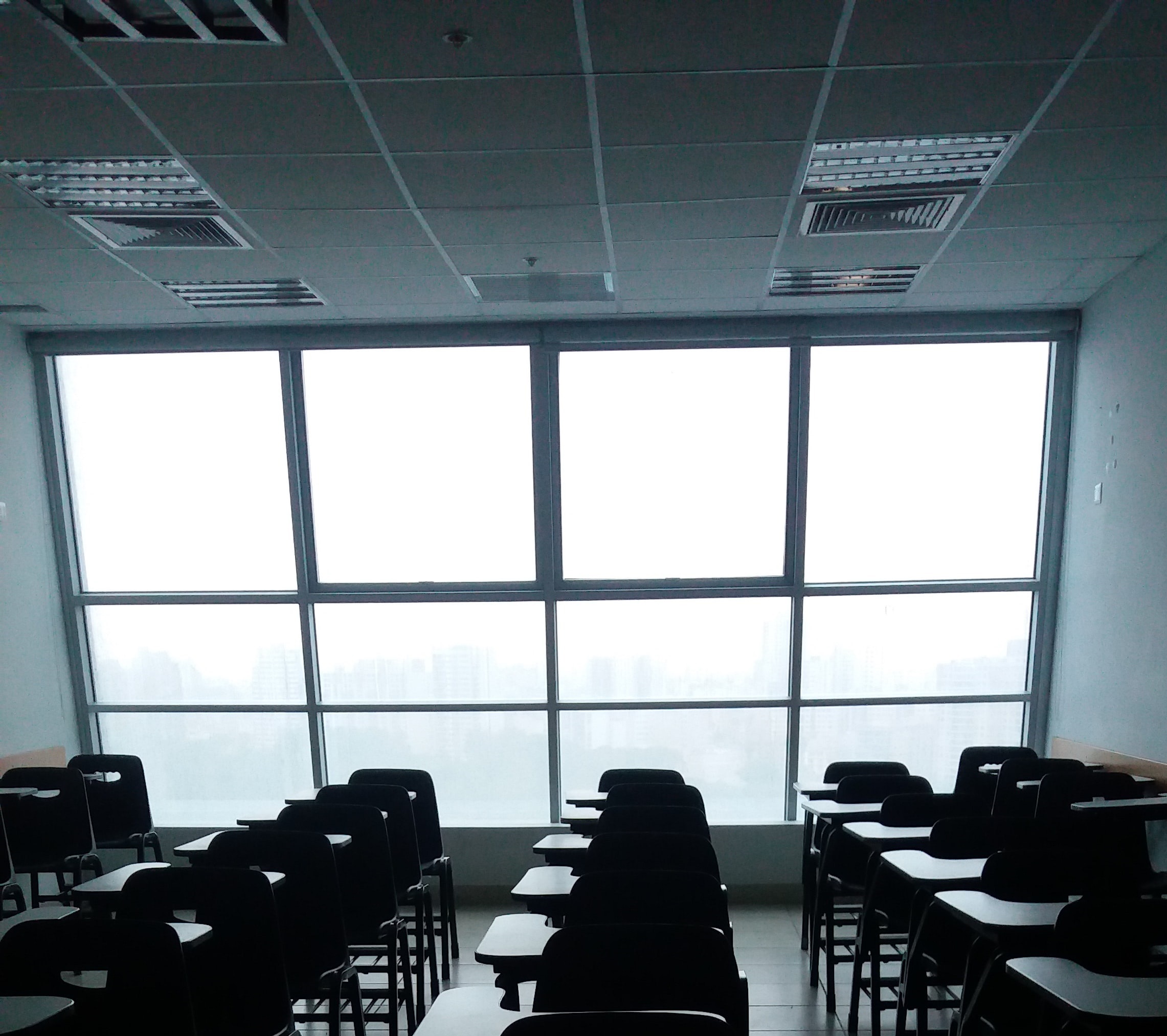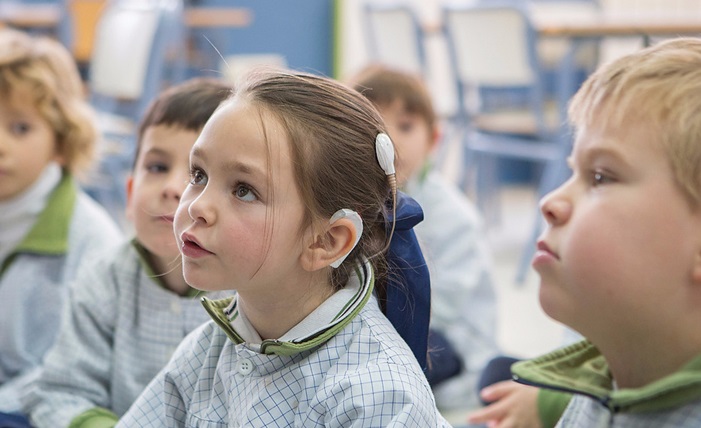
Classrooms the world over are filled with children that have a range of hearing conditions: from tinnitus and hearing loss to glue ear and noise sensitivity (hyperacusis). Meanwhile, schools claim to be “inclusive” without accommodating this aural diversity in any way. How can they achieve real inclusivity and accessibility by applying some of the core principles of Universal Design to learning environments?
In Universal Design: Embracing Difference, we discussed how those that shape the built environment can begin to think more inclusively by considering individuals as landing somewhere on a spectrum of difference [1] of aural diversity rather than in relation to a mythical average that nobody is actually truly represented by.
There are certain environments in which Universal Design needs to be embraced rather urgently. Learning environments specifically incorporate diverse learners into educational environments predominantly designed with the “average” learner in mind.
To give a practical example from sub-tertiary education, specialized schools that cater to difference are in decline in most countries in favor of incorporating all learners into mainstream schools. Currently, most children with sensory differences are mainstreamed in schools without special provision. For example, in the UK, 78% of children with hearing differences go to mainstream schools and only a small percentage of those children receive special provision [2].
The literature is flooded with undisputed evidence that acoustic environments with lower noise levels and better speech intelligibility generate returns in students’ academic performance and behavior, and teacher’s health and wellbeing [3, 4]. They also show incredibly consistent evidence of high noise levels in schools globally [5,6, 7], including countries in which mandatory building codes and standards are present, such as the UK [8].
In education, careful planning of space and other environmental factors such as acoustics and lighting mean that design elements can be the difference between learning and being confronted with a barrier which cannot be overcome. And the effect of getting a sub-optimal education at any level can be drastic. So, education is a particularly important context in which to apply the principles of Universal Design.
Universal design for learning: core principles
Applying both concepts of Universal Design and the ethos of difference to the classroom up to the present day has given rise to an architectural movement called Universal Design for Learning. This movement is at the forefront of the greatly lauded ideal of inclusivity, something that almost no discussion of education today is complete without.
Currently, steps are being taken in the right direction, but much more still needs to be done before schools, even in the world’s wealthier countries, are able to authentically claim to be inclusive. It requires certain adaptations of the environment and pedagogical approaches, without which inclusivity remains just a well-meaning word.
 The principle of Equitable use is central to Universal Design in general, meaning that all learners will have the same means of use. In situations in which this would be difficult, it does not necessarily imply a one-size fits all solution, but rather that a variety of options be available that are equivalent to one-another and provide similar affordances.
The principle of Equitable use is central to Universal Design in general, meaning that all learners will have the same means of use. In situations in which this would be difficult, it does not necessarily imply a one-size fits all solution, but rather that a variety of options be available that are equivalent to one-another and provide similar affordances.
Some additional core principles of Universal Design for Learning to consider when designing inclusive educational environments for aurally diverse groups include [9]:
- Flexibility in use: providing learners with a number of learning environments that accommodate their differences. Flexible classroom designs are able to do this by allowing learners and teachers to manipulate the spaces depending on the requirements of the curriculum or individual needs and differences. Flexibility gives choice. Adapting the environment when communication or hearing is sub-optimal is a possibility in such an environment.
- Perceptible Information implies designs that make all information and communication within those spaces available regardless of differences in the individual or the context. This means a classroom in which what is being communicated by the teacher is accessible to the student regardless of sensory differences. If these differences are hearing-related, this could imply acoustic optimization, or technology for converting speech to text.
- The principle of Low physical effort is fairly self-explanatory. No feature of the learning environment should be more complex and effortful to use than is entirely necessary, whether it be a window handle, a piece of sophisticated technology, or a speaker’s voice. Listening is extremely effortful under certain situation for those with additional listening needs, and designers need to consider this when shaping educational environments.
Classroom acoustics that cater to difference
 Schools globally share a common problem: acoustics have only been a secondary consideration – if they are considered at all. In many cases, educators must simply work with what they are given. And what they are given, all too often, are ancient school buildings that are drastically in need of refurbishment.
Schools globally share a common problem: acoustics have only been a secondary consideration – if they are considered at all. In many cases, educators must simply work with what they are given. And what they are given, all too often, are ancient school buildings that are drastically in need of refurbishment.
In countries in which building codes and standards have actually prioritized acoustics however, those standards will usually only apply to newly built schools (eg. the UK’s BB93 and Swedish Standard 25268:2017+T1:2017). So refurbishment (or building inclusively in the first place) will often only done in cases in which key stakeholders are aware enough of the impact of poor acoustics to demand a better learning environment. In such cases, thinking in terms of Universal Design for Learning could be a helpful strategy for adjusting viewpoints to aim for the most inclusive and accessible space for all learners rather than the mythical average.
The principles of Universal Design for Learning can be applied to the sound environment in classrooms by taking three core factors into consideration.
- Background noise: Removing unwanted reflections, particularly those in the lower frequencies which are so challenging for speech perception, is an essential first step to creating an accessible sound environment for all children in the classroom.
- Reverberation time: Keeping reverberation times as low as possible across frequencies essential for hearing speech will ensure better speech clarity. Lower reverberation time also helps to keep background noise levels down by limiting the build-up of sound energy in a room.
- Signal-to-noise ratios: The larger the gap between the noise level and the teacher’s voice in a classroom, the easier it is for students to communicate with their peers and teachers, acquire knowledge and follow instructions. Although this would require some real-time monitoring in application, decreasing 1 and 2 through acoustic treatment has a knock-on effect on the signal-to-noise ratio (see Essex Study).
For those that wish to specify more inclusive and accessible sound environment in schools, the recommended acoustic standards from BATOD (British Association for Teachers of the Deaf) would make a good point of reference:
Can we afford it?
Universal Design for Learning might be considered expensive and complex. However, non-inclusivity is expensive as well. As things stand, exclusion requires specialized teachers working with smaller numbers of students, sometimes one-on-one, in separate spaces reserved for those students.
By making learning spaces more inclusive and flexible, larger numbers of children can be incorporated into classes without the need for specialized support. And learning spaces that are more accessible, intuitive and flexible make sensation and perception less effortful for all learners that inhabit them.
[1] Rose, D. (2000). Universal design for learning. Journal of Special Education Technology, 15(3), 45-49.
[2] CRIDE (2019). 2019 UK-wide summary. https://www.ndcs.org.uk/CRIDE
[3] The effects of classroom and environmental noise on children’s academic performance. Dockrell & Shield. JASA 2008.
[4] Acoustic ergonomics of school. Tiesler & Oberdöster 2006.
[5] Peng, J., Zhang, H. and Wang, D. (2018). Measurement and analysis of teaching and background noise level in classrooms of Chinese elementary schools. Applied Acoustics 131, 1-4.
[6] Silva, L., Oliveira, I. and Silva, J. (2016). The impact of urban noise on primary schools. Perceptive evaluation and objective assessment. Applied Acoustics 106, 2-9.
[7] Whiting, J. K., Jensen, Z. R., Leishman, T. W., Berardi, M. L., & Hunter, E. J. (2015, May). Classroom acoustics for vocal health of elementary school teachers. In Proceedings of Meetings on Acoustics 169ASA (Vol. 23, No. 1). Acoustical Society of America.
[8] Durup, N., Shield, B., Dance, S. and Sullivan, R. (2015). An investigation into relationships between classroom acoustic measurements and voice parameters of teachers. J. Building Acoustics 22(3-4).
[9] Story, M. F. (2001). Principles of universal design. Universal design handbook.



